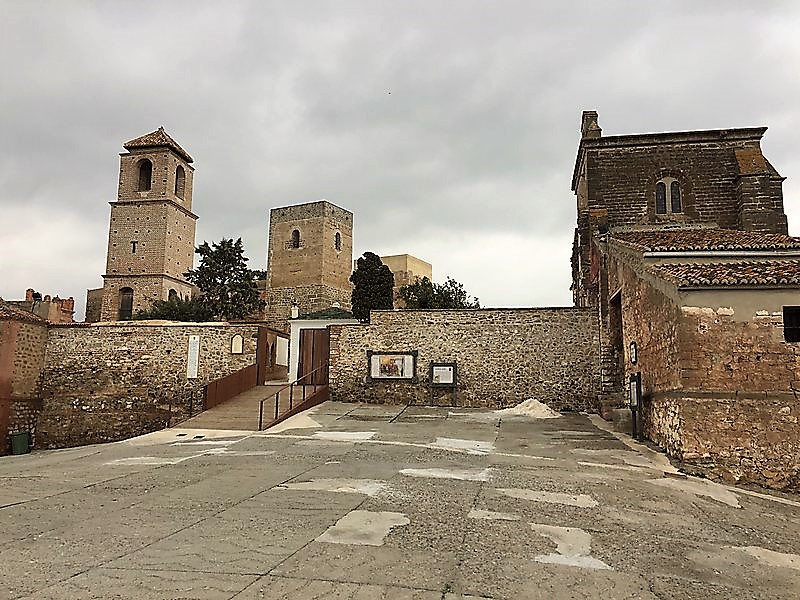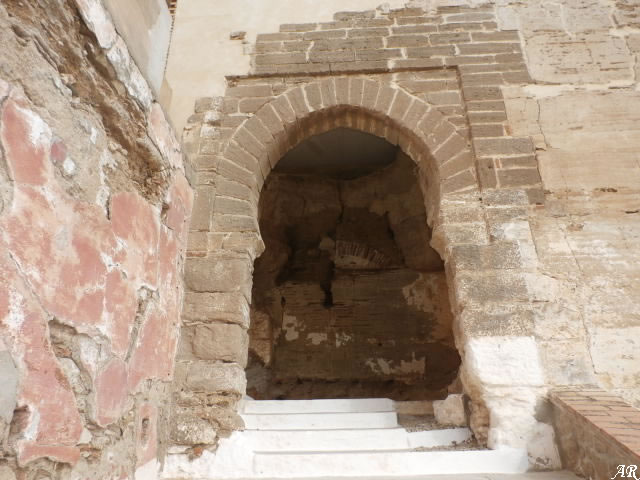The Álora Castle is one of the monuments you must see in Álora.
The Arabic Castle of Álora is a walled enclosure that highlights the Tower of the Vela and the Horseshoe Arch, with wonderful views of the village and the Guadalhorce Valley. Located on top of the Cerro de las Torres in the town of Álora (Málaga).
Declared a National Historic Monument in 1931.


History of the Arabic Castle of Álora
Aunque su origen es fenicio y romano, el castillo fue arrasado por vándalos, y fueron los árabes los que lo restauraron y convirtieron en alcazaba durante la Edad Media, en los siglos IX y X.
This reconstruction took place in several stages:
- During the Emirate, the foundations were built.
- During the Caliphates, the construction was erected.
- During the Taifa Kingdoms, the most fragile part was built.
In 1680, the cemetery was installed there, which was located there for more than 200 years, of which two towers and many sections of the wall remain, usually with niches attached inside.
On the site of the former mosque, the Church of Our Lady of the Incarnation was built.
THE CASTLE IS IN A STATE OF CONSOLIDATED RUIN. SOME OF ITS TOWERS AND WALLS HAVE BEEN REBUILT, INCLUDING THE HOMAGE TOWER WHICH IS OPEN TO VISITORS, FROM WHICH WONDERFUL VIEWS CAN BE OBSERVED.
Characteristics of the Castle of Álora
The entrance to the walled enclosure of the Castle takes place through the gate tower, through a horseshoe arch, unique in the Western world.

The Castle is composed of three walled enclosures:
1) THE FIRST ENCLOSURE: a very regular square enclosure, about 1200 square meters. Formed by 6 square towers, from the Caliphate period, with their respective walls. Four of the towers are located at the corners, and the other two in the center of the northwest (mausoleum of the Bootello family) and southeast (Ingress Arch or Horseshoe Arch, reconstructed in 2004) sections.
2) THE SECOND ENCLOSURE: more irregular and almost disappeared, it appears to have been formed by walls. It is linked to the first one from the North and West towers. Its perimeter is very defined, with remains of towers and walls that are still preserved. At its southern end, we find the Main Chapel of the primitive Parish of the Incarnation.
3) THE THIRD ENCLOSURE: it started towards the urban area along with the second enclosure. It is an edifice that is mostly demolished.
Between the first and second enclosure, we find the Tower of the Watchman, a square tower, divided into three square floors that decrease in height.

Church of Our Lady of the Incarnation
Known for the Chapel of Jesus Nazareno de las Torres, which was built after the conquest and completed in 1492.

A Gothic style parish consisting of three naves, of which only the Gothic style main chapel with its structural elements and the bell tower remain today.
Since 1641, the main altar has been presided over by the image of Jesus Nazareno de las Torres and accompanied since 1953 by the Virgin of the Souls. Both images were created by the Perote sculptor José Navas-Parejo.
The original image of Jesus Nazareno de las Torres disappeared during the Spanish Civil War and it was then that José Navas created the current image.
Tower of Homage
The highest area of the first walled enclosure and the only one that has been reconstructed is the Tower of Homage. It is located in the southern corner of the upper enclosure.

Legend has it that Diego Gómez de Ribera arrived here in 1434 leading his troops, which surrendered to the city when he fell in front of the walls. From this event comes the well-known frontier Romance of Álora, which can be seen written at the entrance to the Castle.

Importance of the Arab Castle of Álora
The importance of the Castle of Álora lies in its location, as a control point of the Guadalhorce Valley. This also made Álora important in the advance of the Christian kingdoms during the Middle Ages.
Contact details and opening hours of the Castillo de Álora
Telephone: 952 495 577
Email: oficinaturismo@alora.es
Web: http://www.alora.es
Hours: Lunes a sábado de 09.00h a 19.00h
Domingos de 10.00 a 19.00h








